Understanding the Differences and Applications Introduction: Tomatoes are a versatile ingredient, widely used in various culinary traditions across the globe. Tomato-based products such as tomato concentrate and tomato paste provide concentrated forms of the fruit that are convenient for cooking applications. While tomato concentrate and tomato paste may seem similar, there are distinct differences in their production methods, consistency, taste, and uses. This article aims to provide a comprehensive overview of tomato concentrate and tomato paste, highlighting their unique characteristics, uses, and advantages in different culinary scenarios. 1. Tomato Concentrate: Tomato concentrate, also known as tomato puree, is produced by cooking down tomatoes to remove excess water. The process involves crushing, straining, and simmering ripe tomatoes to obtain a thick, smooth consistency. Tomato concentrate is typically available in both canned and in tube forms. It has a slightly thinner consistency compared to tomato paste and is characterized by its concentrated flavor. Uses of Tomato Concentrate: – Enhancing the flavor of sauces: Tomato concentrate can be added to sauces to intensify the taste and richness. – Soups and stews: It serves as an excellent base for soups, stews, and chili recipes, providing a concentrated tomato flavor. – Marinades and dressings: Tomato concentrate can be incorporated into marinades and dressings to lend a tangy, savory note. – Pizza and pasta dishes: It is commonly used as a pizza and pasta sauce, providing a vibrant red color and intense tomato flavor. Advantages of Tomato Concentrate: – Improved shelf life: Tomato concentrate has a longer shelf life compared to fresh tomatoes, ensuring availability year-round.
Tomato sauce
 – Versatility: Its concentrated nature allows for greater control over the flavor intensity, making it suitable for various culinary applications. – Easy storage: Tomato concentrate, especially canned versions, can be easily stored in the pantry for extended periods without losing its quality or flavor. 2. Tomato Paste: Tomato paste is made by cooking down tomatoes for a longer duration than tomato concentrate. Additionally, the seeds and skin are removed to achieve a smooth consistency. Tomato paste typically has a thicker texture and a more intense flavor, owing to the higher concentration of tomatoes. Uses of Tomato Paste: – Sauces and gravies: Tomato paste acts as a thickening agent and imparts a deep, rich flavor to sauces and gravies. – Braising and roasting: It can be used to coat vegetables, meat, or poultry while braising or roasting, adding a caramelized tomato flavor. – Tomato-based soups: Tomato paste serves as a base for making tomato soups, providing a concentrated tomato essence. – Flavor enhancer: A spoonful of tomato paste can enhance the taste of various dishes, such as chili, casseroles, and stews. Advantages of Tomato Paste: – Intense flavor: Tomato paste offers a highly concentrated tomato flavor, making it ideal for dishes that require a strong tomato presence. – Thickening agent: Its thick consistency helps to add body and richness to sauces, gravies, and other culinary preparations. – Extended shelf life: Tomato paste, particularly the ones sold in tubes, has a longer shelf life than fresh tomatoes, providing convenience and versatility in the kitchen. 3. Comparison and Choosing the Right Option: When deciding between tomato concentrate and tomato paste, it is essential to consider the specific requirements of the recipe and desired flavor intensity. Here are some factors to consider while making a choice: – Consistency: Tomato paste has a thicker texture, while tomato concentrate is slightly thinner. – Flavor intensity: Tomato paste has a more potent, deeper flavor compared to tomato concentrate. – Recipe requirements: Some recipes may call for a thickening agent like tomato paste, while others may require a more subtle tomato flavor, making tomato concentrate a suitable choice. –
– Versatility: Its concentrated nature allows for greater control over the flavor intensity, making it suitable for various culinary applications. – Easy storage: Tomato concentrate, especially canned versions, can be easily stored in the pantry for extended periods without losing its quality or flavor. 2. Tomato Paste: Tomato paste is made by cooking down tomatoes for a longer duration than tomato concentrate. Additionally, the seeds and skin are removed to achieve a smooth consistency. Tomato paste typically has a thicker texture and a more intense flavor, owing to the higher concentration of tomatoes. Uses of Tomato Paste: – Sauces and gravies: Tomato paste acts as a thickening agent and imparts a deep, rich flavor to sauces and gravies. – Braising and roasting: It can be used to coat vegetables, meat, or poultry while braising or roasting, adding a caramelized tomato flavor. – Tomato-based soups: Tomato paste serves as a base for making tomato soups, providing a concentrated tomato essence. – Flavor enhancer: A spoonful of tomato paste can enhance the taste of various dishes, such as chili, casseroles, and stews. Advantages of Tomato Paste: – Intense flavor: Tomato paste offers a highly concentrated tomato flavor, making it ideal for dishes that require a strong tomato presence. – Thickening agent: Its thick consistency helps to add body and richness to sauces, gravies, and other culinary preparations. – Extended shelf life: Tomato paste, particularly the ones sold in tubes, has a longer shelf life than fresh tomatoes, providing convenience and versatility in the kitchen. 3. Comparison and Choosing the Right Option: When deciding between tomato concentrate and tomato paste, it is essential to consider the specific requirements of the recipe and desired flavor intensity. Here are some factors to consider while making a choice: – Consistency: Tomato paste has a thicker texture, while tomato concentrate is slightly thinner. – Flavor intensity: Tomato paste has a more potent, deeper flavor compared to tomato concentrate. – Recipe requirements: Some recipes may call for a thickening agent like tomato paste, while others may require a more subtle tomato flavor, making tomato concentrate a suitable choice. –
Specifications of tomato sauce
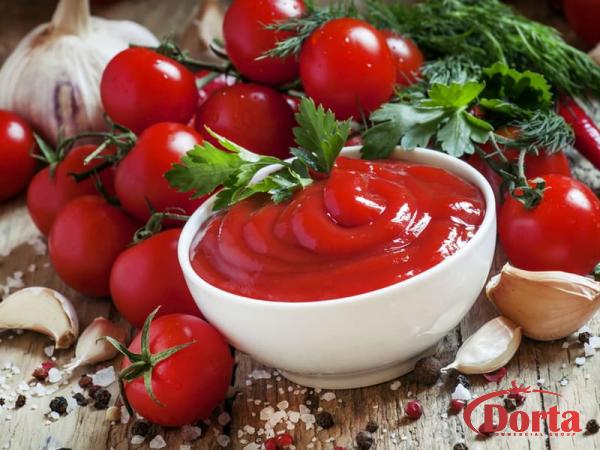 Storage and shelf life: Both tomato concentrate and tomato paste have extended shelf lives, but canned tomato concentrate typically lasts longer than tube tomato paste. In most cases, both tomato concentrate and tomato paste can be used interchangeably, with slight adjustments to the quantity to maintain the desired flavor profile of the dish. Conclusion: Tomato concentrate and tomato paste are invaluable ingredients in the culinary world, offering concentrated forms of tomatoes that add depth, flavor, and color to various dishes. Tomato concentrate, with its slightly thinner consistency and less intense taste, is commonly used as a base for sauces, soups, marinades, and dressings. Tomato paste, on the other hand, provides a thick, rich flavor and is perfect for thickening sauces, gravies, and enhancing the taste of oven-baked dishes. Understanding the differences between these two tomato-based products helps chefs and home cooks make informed choices, ensuring the best results in their culinary endeavors.1. The Process of Production: Tomato concentrate and tomato paste are both derived from tomatoes, but the production methods differ slightly. Tomato concentrate is made by cooking down ripe tomatoes and removing excess water, resulting in a thick and smooth consistency. On the other hand, tomato paste involves a longer cooking process to intensify the flavor, with the seeds and skin removed to achieve a smooth texture. 2. Flavor Profiles: Tomato concentrate is known for its concentrated tomato flavor, while tomato paste offers an even more intense and robust taste. The flavor of tomato concentrate is slightly milder, making it suitable for dishes that require a subtle tomato presence. Tomato paste’s deep flavor enhances sauces, gravies, and other recipes that require a strong tomato presence. 3. Application in Sauces and Gravies: Both tomato concentrate and tomato paste serve as essential ingredients in sauces and gravies. Tomato paste, with its thick consistency and intense flavor, is well-suited for recipes that require a rich and concentrated tomato taste. Tomato concentrate, with its thinner consistency, is preferred when a more subtle tomato flavor is desired. 4. Usage in Soups, Stews, and Chili: Tomato concentrate and tomato paste are frequently used in soup, stew, and chili recipes. Tomato concentrate adds a vibrant red color and a tangy tomato taste to these dishes. Tomato paste, with its thickening properties and intensified flavor, plays a crucial role in creating hearty and flavorful soups, stews, and chili. 5. Versatility in Pizza and Pasta: Tomato concentrate and tomato paste have a special place in pizza and pasta dishes. Tomato concentrate can be used as a pizza and pasta sauce, providing a balanced tomato flavor without overpowering other ingredients.
Storage and shelf life: Both tomato concentrate and tomato paste have extended shelf lives, but canned tomato concentrate typically lasts longer than tube tomato paste. In most cases, both tomato concentrate and tomato paste can be used interchangeably, with slight adjustments to the quantity to maintain the desired flavor profile of the dish. Conclusion: Tomato concentrate and tomato paste are invaluable ingredients in the culinary world, offering concentrated forms of tomatoes that add depth, flavor, and color to various dishes. Tomato concentrate, with its slightly thinner consistency and less intense taste, is commonly used as a base for sauces, soups, marinades, and dressings. Tomato paste, on the other hand, provides a thick, rich flavor and is perfect for thickening sauces, gravies, and enhancing the taste of oven-baked dishes. Understanding the differences between these two tomato-based products helps chefs and home cooks make informed choices, ensuring the best results in their culinary endeavors.1. The Process of Production: Tomato concentrate and tomato paste are both derived from tomatoes, but the production methods differ slightly. Tomato concentrate is made by cooking down ripe tomatoes and removing excess water, resulting in a thick and smooth consistency. On the other hand, tomato paste involves a longer cooking process to intensify the flavor, with the seeds and skin removed to achieve a smooth texture. 2. Flavor Profiles: Tomato concentrate is known for its concentrated tomato flavor, while tomato paste offers an even more intense and robust taste. The flavor of tomato concentrate is slightly milder, making it suitable for dishes that require a subtle tomato presence. Tomato paste’s deep flavor enhances sauces, gravies, and other recipes that require a strong tomato presence. 3. Application in Sauces and Gravies: Both tomato concentrate and tomato paste serve as essential ingredients in sauces and gravies. Tomato paste, with its thick consistency and intense flavor, is well-suited for recipes that require a rich and concentrated tomato taste. Tomato concentrate, with its thinner consistency, is preferred when a more subtle tomato flavor is desired. 4. Usage in Soups, Stews, and Chili: Tomato concentrate and tomato paste are frequently used in soup, stew, and chili recipes. Tomato concentrate adds a vibrant red color and a tangy tomato taste to these dishes. Tomato paste, with its thickening properties and intensified flavor, plays a crucial role in creating hearty and flavorful soups, stews, and chili. 5. Versatility in Pizza and Pasta: Tomato concentrate and tomato paste have a special place in pizza and pasta dishes. Tomato concentrate can be used as a pizza and pasta sauce, providing a balanced tomato flavor without overpowering other ingredients.
buy tomato sauce
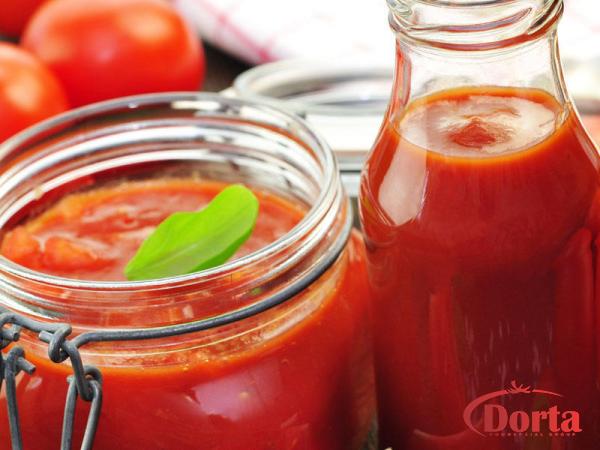 Tomato paste, with its concentrated nature, is ideal for creating thick and robust pasta and pizza sauces. 6. Marinades and Dressings: Both tomato concentrate and tomato paste can be incorporated into marinades and dressings. Tomato concentrate brings a tangy and savory note to salad dressings or marinades, enhancing the overall taste. Tomato paste, with its thick texture and intense flavor, creates a robust base for marinades and dressings. 7. Shelf Life and Storage: Both tomato concentrate and tomato paste have a longer shelf life compared to fresh tomatoes, making them convenient pantry staples. Canned tomato concentrate typically has a longer shelf life than tube tomato paste. It is essential to store both products in a cool, dry place, away from direct sunlight, to ensure their quality and taste remain intact. 8. Cost Considerations: When it comes to cost, tomato concentrate is generally more affordable than tomato paste. Tomato concentrate can be purchased in larger quantities and often comes in economically priced canned options. Tomato paste, with its concentrated nature and richer flavor, tends to be more expensive. 9. Availability and Convenience: Tomato concentrate and tomato paste are readily available in most grocery stores. Canned tomato concentrate is commonly found in the canned vegetable section, while tomato paste is typically sold in small tubes or cans. Both options offer convenience and ease of use in cooking and can be easily stored to maintain their freshness. 10. Culinary Creativity: Tomato concentrate and tomato paste provide chefs and home cooks with flexibility and creativity in their culinary endeavors. Their concentrated nature allows for precise control over flavor intensity and helps achieve desired results in various recipes. Whether it’s adding depth to a sauce, enhancing the taste of a soup, or creating a flavorful marinade, these tomato-based products are essential tools in the kitchen. 11. Considerations for Health-Conscious Consumers: While tomato concentrate and tomato paste offer concentrated tomato flavors, it’s crucial to consider the nutritional aspects. Both products are generally low in calories and fat, but they may contain added salt or sugar. Health-conscious consumers should look for low-sodium or no-added-sugar options. 12. The Final Verdict: Tomato concentrate and tomato paste are distinct products with unique flavors and consistencies. Choosing between the two depends on the specific requirements of the recipe and personal taste preferences. Tomato concentrate is ideal for milder tomato flavors and dishes where a thinner sauce is desired. Tomato paste, with its concentrated and robust flavor, is suitable for dishes that demand a rich tomato taste and thickening properties. By understanding the differences and applications of tomato concentrate and tomato paste, chefs and home cooks can enhance the taste and versatility of their culinary creations.
Tomato paste, with its concentrated nature, is ideal for creating thick and robust pasta and pizza sauces. 6. Marinades and Dressings: Both tomato concentrate and tomato paste can be incorporated into marinades and dressings. Tomato concentrate brings a tangy and savory note to salad dressings or marinades, enhancing the overall taste. Tomato paste, with its thick texture and intense flavor, creates a robust base for marinades and dressings. 7. Shelf Life and Storage: Both tomato concentrate and tomato paste have a longer shelf life compared to fresh tomatoes, making them convenient pantry staples. Canned tomato concentrate typically has a longer shelf life than tube tomato paste. It is essential to store both products in a cool, dry place, away from direct sunlight, to ensure their quality and taste remain intact. 8. Cost Considerations: When it comes to cost, tomato concentrate is generally more affordable than tomato paste. Tomato concentrate can be purchased in larger quantities and often comes in economically priced canned options. Tomato paste, with its concentrated nature and richer flavor, tends to be more expensive. 9. Availability and Convenience: Tomato concentrate and tomato paste are readily available in most grocery stores. Canned tomato concentrate is commonly found in the canned vegetable section, while tomato paste is typically sold in small tubes or cans. Both options offer convenience and ease of use in cooking and can be easily stored to maintain their freshness. 10. Culinary Creativity: Tomato concentrate and tomato paste provide chefs and home cooks with flexibility and creativity in their culinary endeavors. Their concentrated nature allows for precise control over flavor intensity and helps achieve desired results in various recipes. Whether it’s adding depth to a sauce, enhancing the taste of a soup, or creating a flavorful marinade, these tomato-based products are essential tools in the kitchen. 11. Considerations for Health-Conscious Consumers: While tomato concentrate and tomato paste offer concentrated tomato flavors, it’s crucial to consider the nutritional aspects. Both products are generally low in calories and fat, but they may contain added salt or sugar. Health-conscious consumers should look for low-sodium or no-added-sugar options. 12. The Final Verdict: Tomato concentrate and tomato paste are distinct products with unique flavors and consistencies. Choosing between the two depends on the specific requirements of the recipe and personal taste preferences. Tomato concentrate is ideal for milder tomato flavors and dishes where a thinner sauce is desired. Tomato paste, with its concentrated and robust flavor, is suitable for dishes that demand a rich tomato taste and thickening properties. By understanding the differences and applications of tomato concentrate and tomato paste, chefs and home cooks can enhance the taste and versatility of their culinary creations.
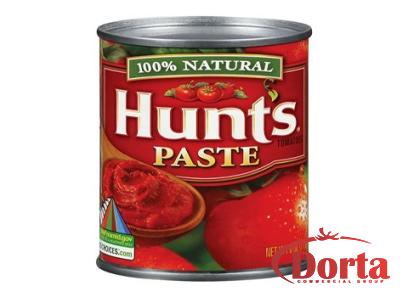
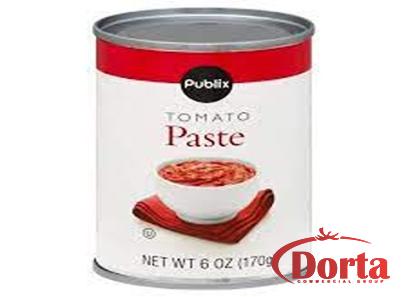
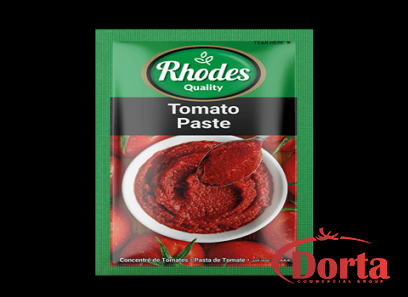

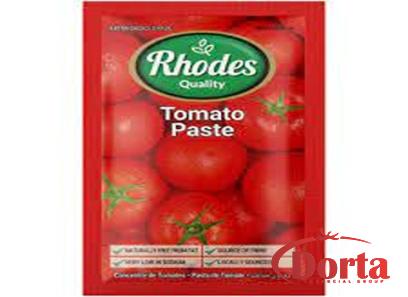
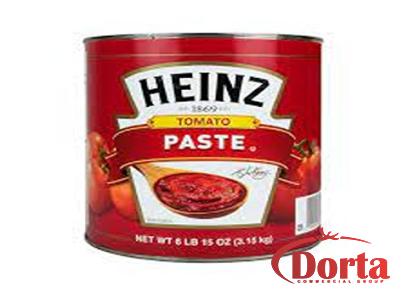

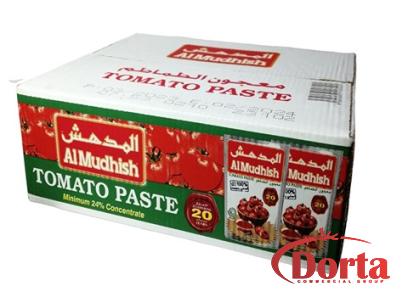
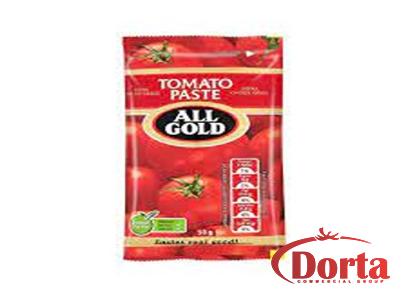
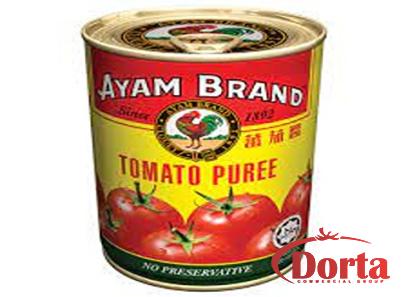
Your comment submitted.